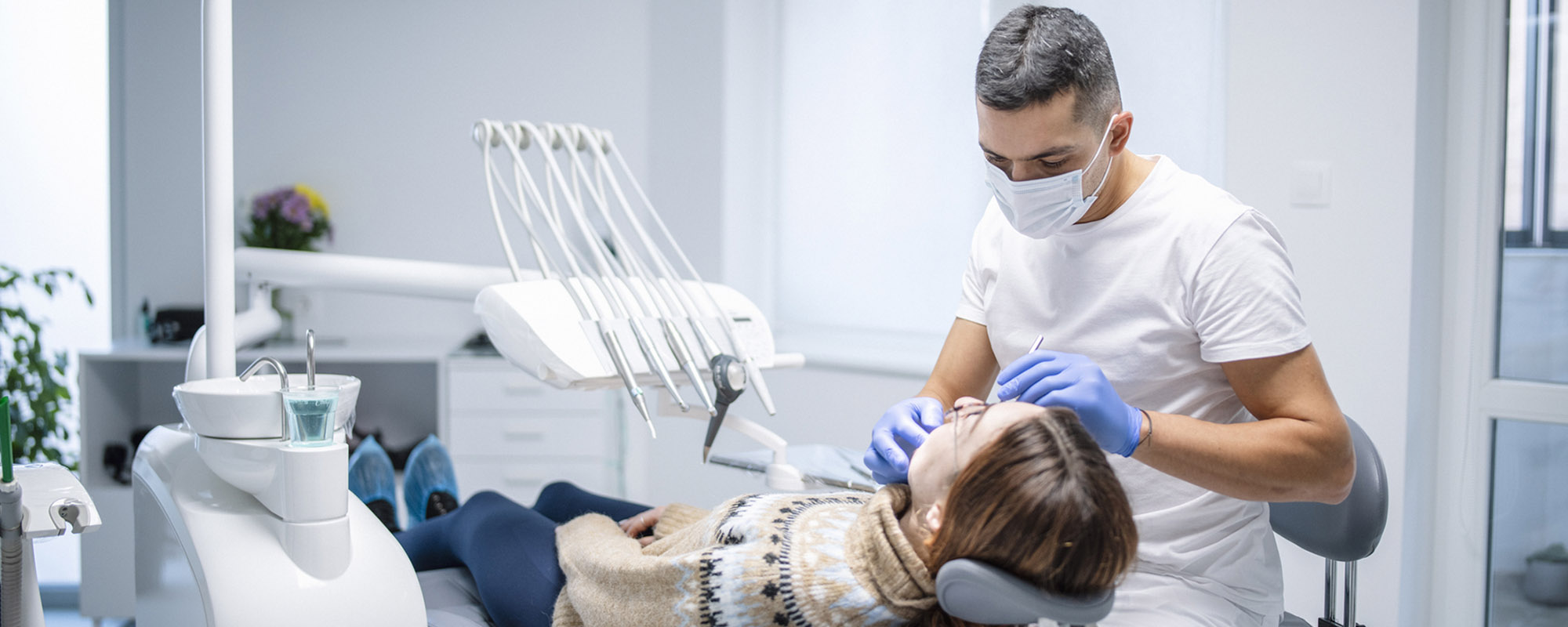Do you know the meaning of all those words and terms associated with a typical dental visit? Even the simplest appointment can come with a few confusing terms found on your claim statement.
We want our dental insurance customers to feel empowered. Here, we’ll break down some of the most common language. And, hey, don’t be afraid to ask questions! Your health comes first, so if something doesn’t make sense or you don’t understand a term, ask your dental provider for clarification.
Recall exam
Also known as your dental check-up, this is when your dentist does a standard examination to see if your mouth has changed since your last appointment. The time recommended in between a recall exam for adults varies, but your dentist can help you understand your specific oral health needs to determine when you need to see them. Typically, adults can go much longer between check-ups when compared to children.
Polishing
This is the removal of soft plaque and stains from the tooth surface. You’ll know when polishing is happening because the dental hygienist will use an electric polishing device with a rotating rubber tip and polishing paste. The cost will depend on how long the polishing takes, with 1 unit of polishing equal to 15 minutes of time. However, polishing can also be done in half units. Ask your dental provider if they can use half units when preparing your claim rather than rounding up to 1.
Dental scaling
Dental scaling involves removing hardened plaque (also known as tartar or calculus) from the tooth surface using a manual or ultrasonic scaling instrument. Scaling is performed above and slightly below the gumline. Like polishing, the cost of this treatment depends on the amount of time it takes, with 1 unit of scaling equal to 15 minutes and half units are available as an option.
Root planing
Root planing is the procedure that involves your dental provider removing the build-up from the root of the tooth when plaque and calculus extend below the gumline. Root planing may be needed in cases where there’s a higher risk of gum disease. It can be done in conjunction with scaling, or it may require a separate appointment, with 1 unit of root planing also equal to 15 minutes of time. Root planing can also be charged by half units.
Bitewing radiographs
Also called bitewing X-rays, these are one of the most common types of dental X-rays and are taken by biting down on a tab with your back teeth while the practitioner captures the image. Bitewings help to diagnose gum disease or cavities in between the teeth. Some mouths can capture what is needed in 1 bitewing per side, and some require 2 per side. We suggest you ask your provider what your needs are based on your mouth.
Your next steps
Dental health is an important part of your overall wellbeing. If you’re due for a checkup, reach out to your dentist to schedule an appointment. Don’t be afraid to ask questions about the dental terms you don’t understand, what they’re doing and how they determine the charge.
If you don’t have a regular dentist, we can help with that too. Simply sign in to the member site or app, select Providers, then click Find a dentist. Our dentist look-up tool will provide you with a list of dentists in your area.
Take a look at our complete guide on navigating the dental landscape in Alberta, with helpful information like the latest dental fee guide and tips on reducing out-of-pocket expenses.
New to health and dental coverage? These tips can help you get started.



i sipped and fell knocking my top denture plate on the edge of a chair breaking it in half ido i have any coverage left on my plan